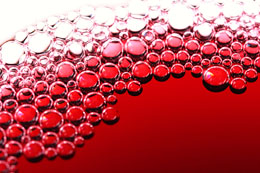 I think I’m obtaining an off-taste with my Muscadine wine because it needs additional degassing. I degas the wine once after the 7 day initial fermentation. Can I also degas again after 30 days and right before the first rack? I understand that the degassing technique may place unwanted oxygen into the wine…..what do you recommend? Thanks
I think I’m obtaining an off-taste with my Muscadine wine because it needs additional degassing. I degas the wine once after the 7 day initial fermentation. Can I also degas again after 30 days and right before the first rack? I understand that the degassing technique may place unwanted oxygen into the wine…..what do you recommend? Thanks
Name: Hermanator
State: Missouri
Hello Hermanator,
I would never recommend degassing the wine more than one time. The later you can wait to do this in the wine making process the better off you will be, preferably close to bottling time.
You are correct in your assumption that degassing could saturate unwanted oxygen into the wine. The oxygen can permanently damage the wine through a process of oxidation, causing the wine to turn amber or orange, and in more advanced cases, giving the wine a raisin flavor. For this reason great care needs to be taken not to splash the wine when you are degassing it.
Splashing the wine is what allows air to be engulfed into the wine. One simple way to degas without splashing is to use a degassing paddle. This is essentially a spinning paddle that goes down into the wine, agitating it from within. Another blog post, Degassing Homemade Wine, has more information on this subject.
The whole purpose of degassing is to cause any lingering CO2 gas from the fermentation to release from the wine and dissipate, but after reading your question I get the feeling that you may be trying to degas something other than CO2. This type of gas is usually not referred to as an off-taste. It simply causes the wine to be fizzy, no different than beer or soda pop. Also there should never be any reason to degas a wine more than once, so I’m wondering what’s going one.
One possibility is that your wine’s fermentation is being dragged out and you are wanting to degas it each time more CO2 gas gets trapped in the wine. But I get the sense that something else might be going on here. Bacterial infections can cause various gases and organic compounds to saturate into the wine. The general effect on the wine in such a situation could be described as an off-taste or odor.
With that being said I would suggest that you treat the wine with a sulfite such as Campden tablets or sodium metabisulfite. This will do two different things for you. First, it will easily destroy any bacteria that may be in your wine. Second, it will help to drive out any gasses that are still in the wine. A two for one. Just follow the directions for a single dose on the container it comes in.
I think it would be helpful to take a hydrometer reading, if you haven’t done so already, to confirm that the fermentation has actually completed and not just puttering along at some undetectable level of activity. You should expect a reading on the Specific Gravity scale between .994 and .998.
If you have never added a sulfite to the wine since the fermentation has completed, then a bacterial infection is very possible. Fortunately, adding sulfite at this time will cause this issue from getting any worse.
Best Wishes,
Ed Kraus
———————————————————————————————————
Ed Kraus is a 3rd generation home brewer/winemaker and has been an owner of E. C. Kraus since 1999. He has been helping individuals make better wine and beer for over 25 years.

I am wondering what I can do if my fermentation has stopped but the hydrometer is still not down below .999 The temperature has never dropped below 70 since I keep it sitting on a heating blanket. Can you give me some suggestions to help get it down to the correct level.
Jamie, before we know what to do, we have to know why the fermentation is not continuing. There is a whole host of reasons why it could be. What I suggest is going over The 10 Ten Reasons For Fermentation Failure and see if any of these ring true for your situation. Once you know the cause, the solutions is usually very simple.
The Top 10 Reasons For Fermentation Failure
http://www.eckraus.com/wine-making-failure/